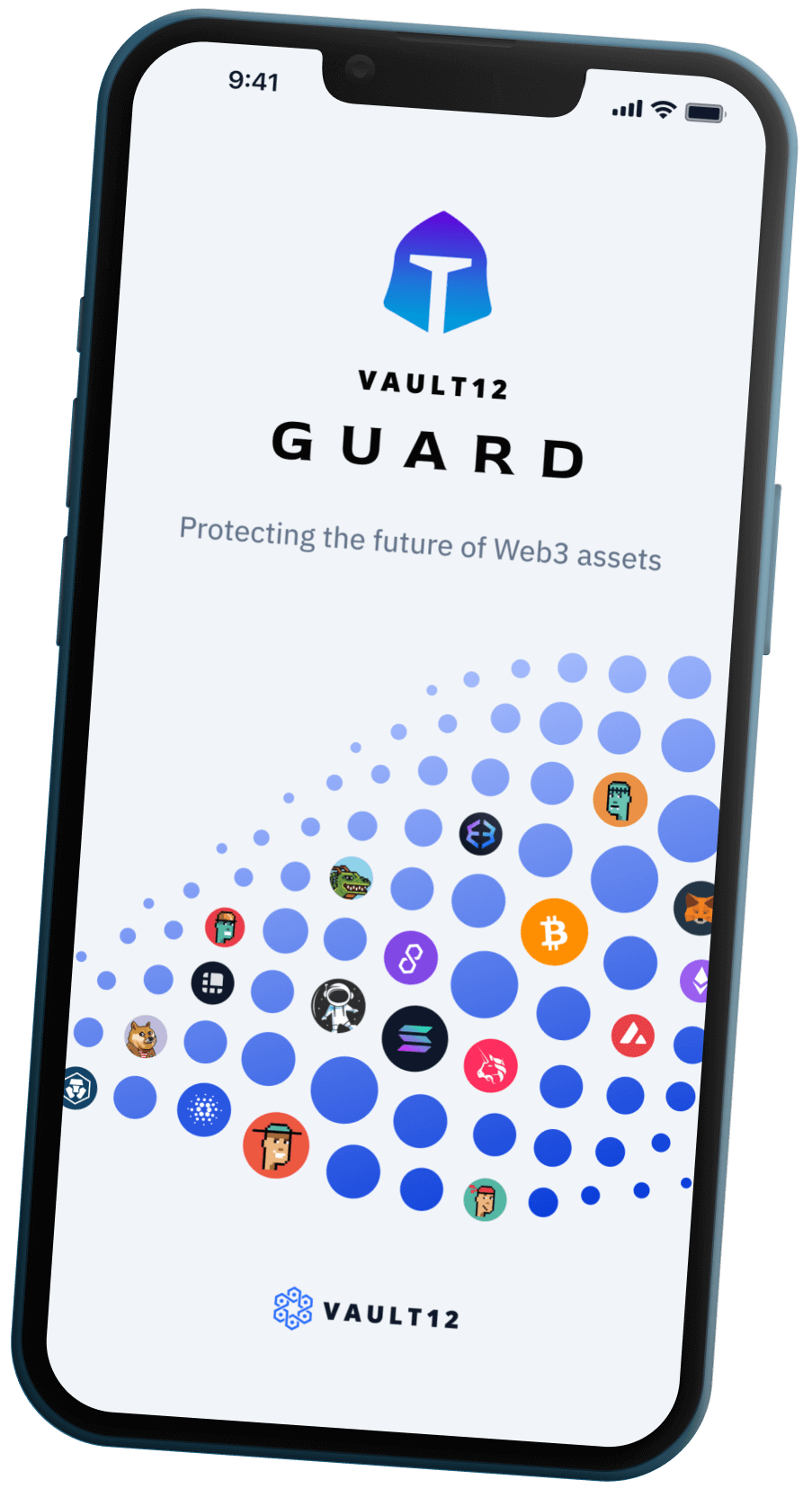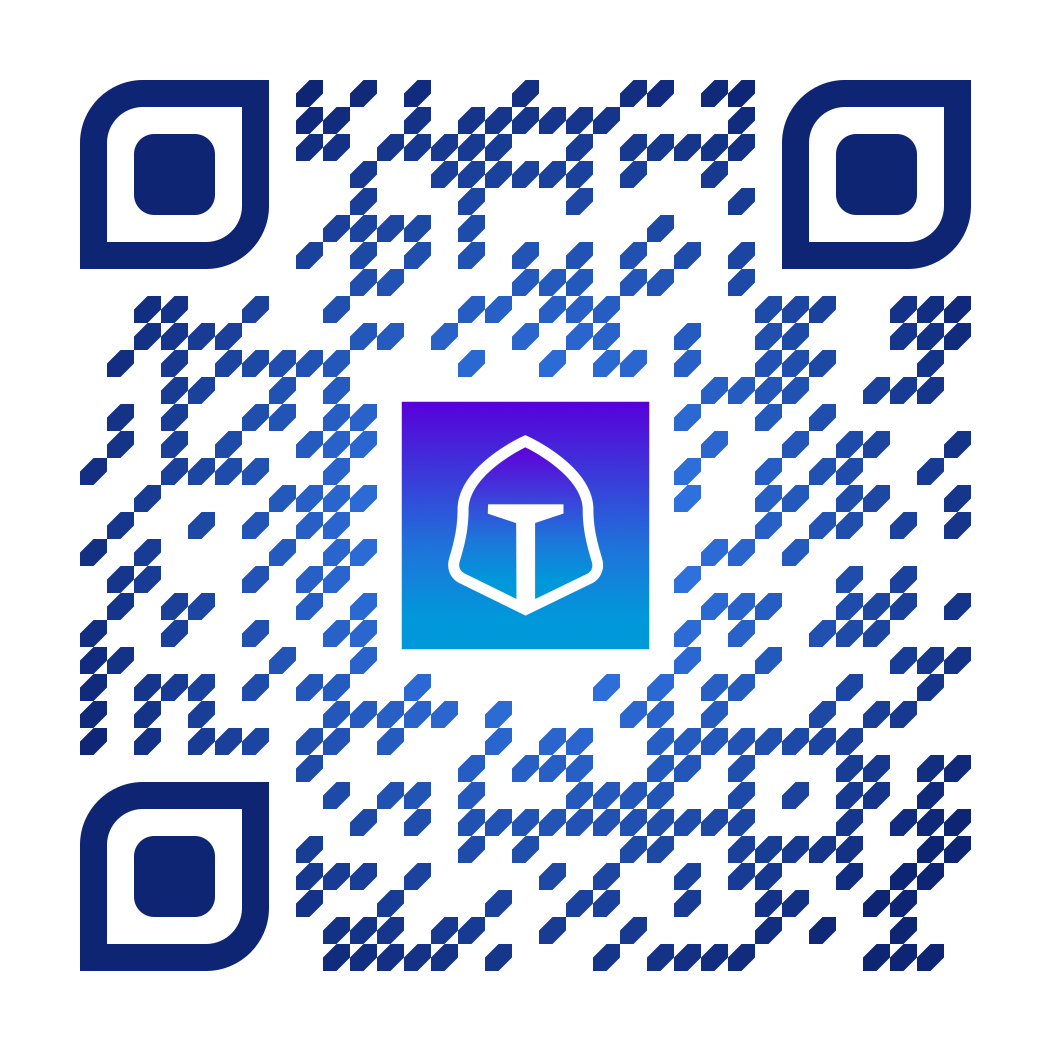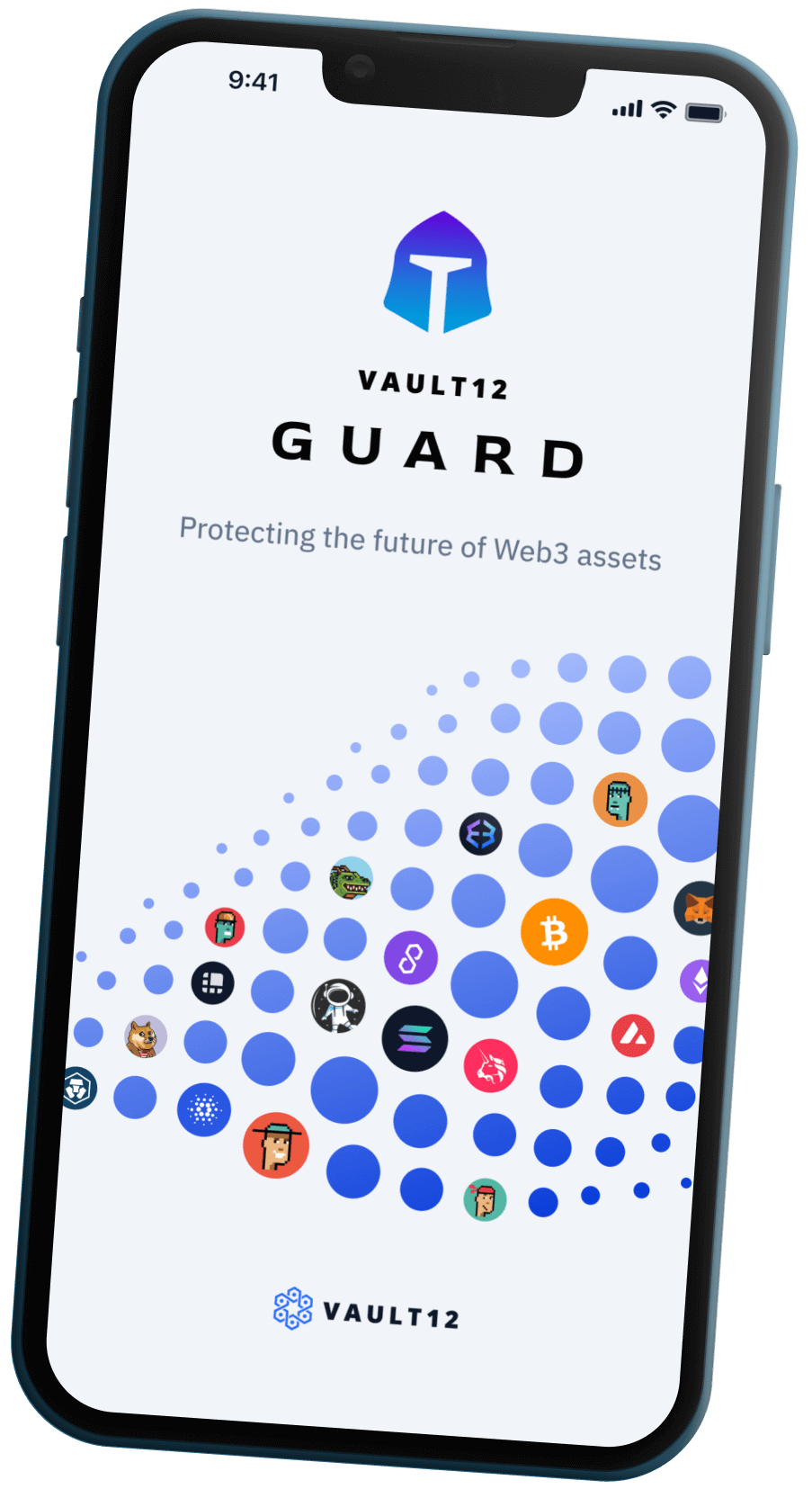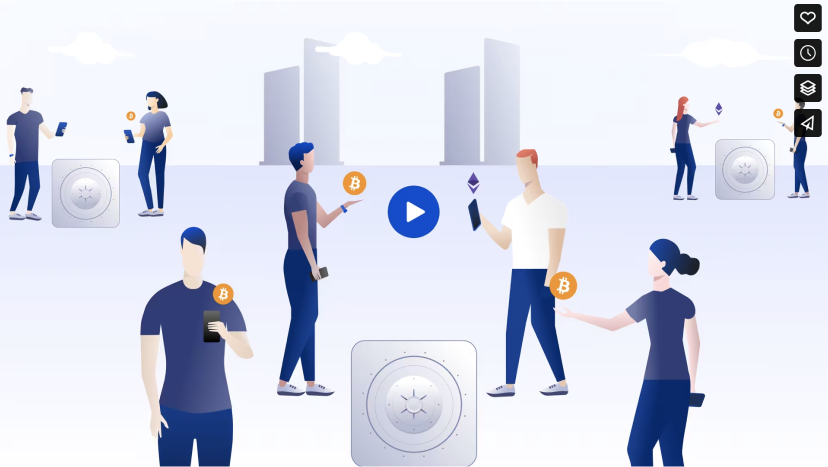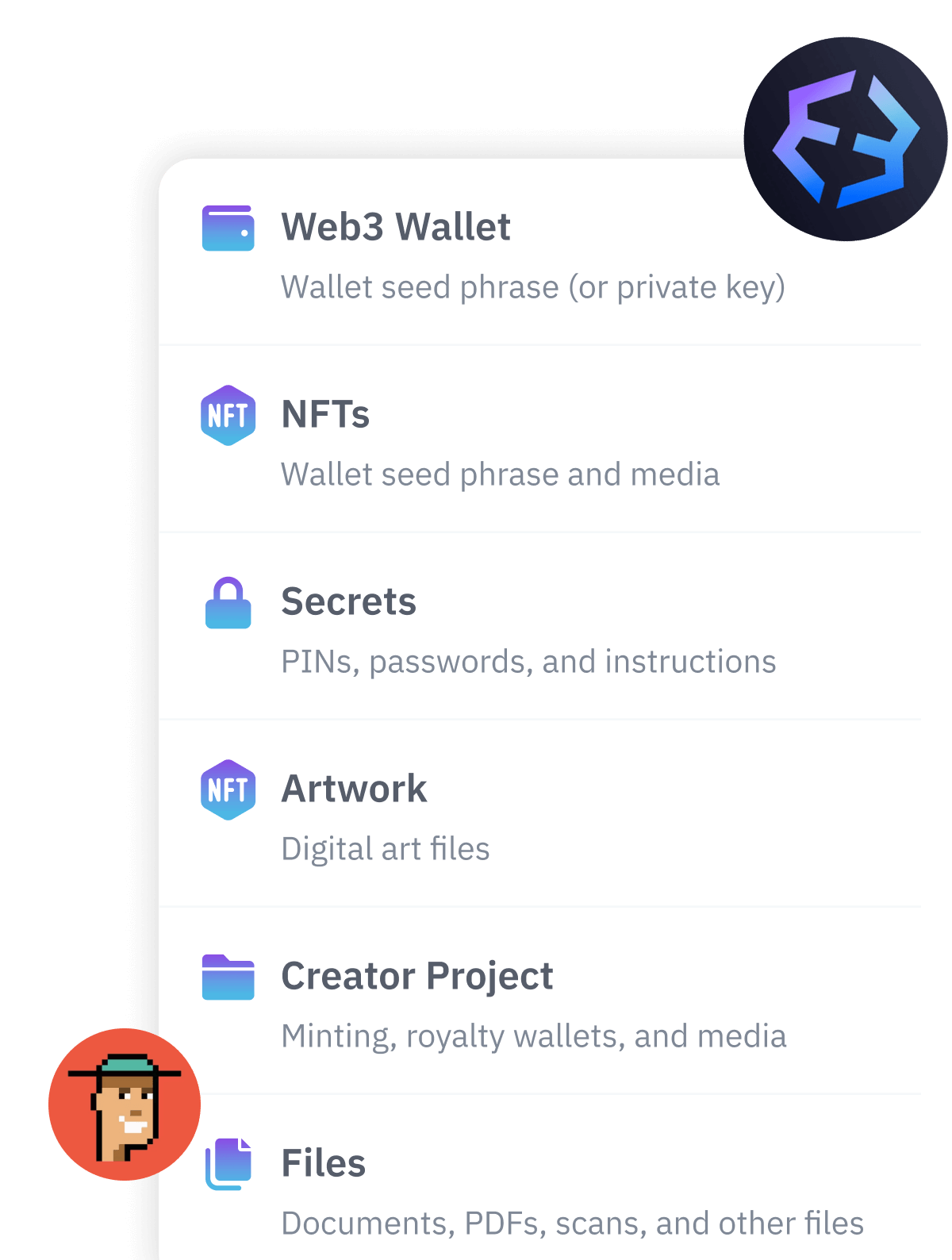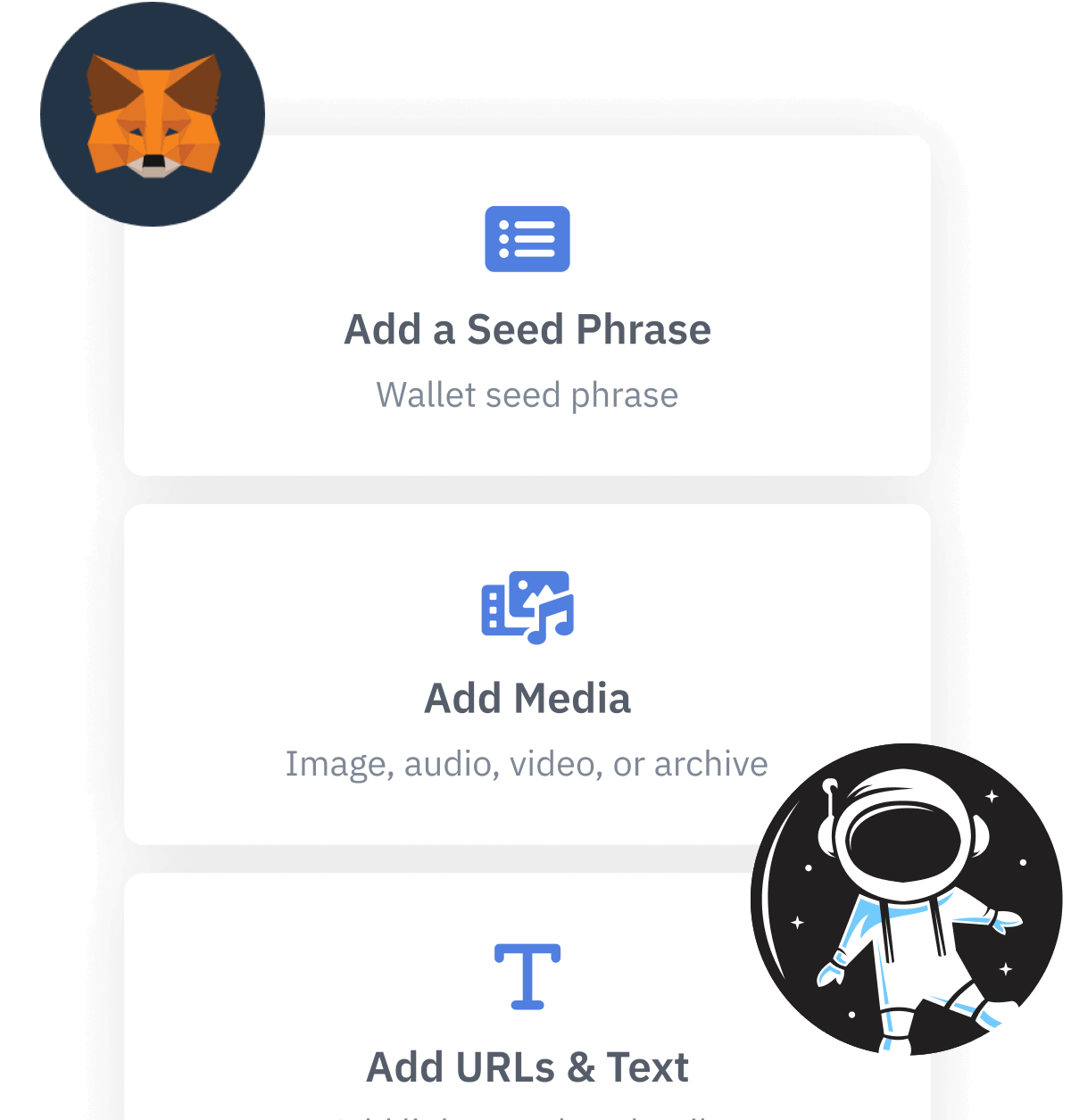Contents
Are you ready for the tokenisation of everything?
The Future of Asset Ownership: Why Tokenisation, Blockchain, Self-Custody Will Transform Finance Forever
From Custodians to Self-Custody: How Blockchain Transforms Asset Ownership
Blockchain technology has allowed the world to innovate in ways that were never possible before. The technology will allow people to access the global financial system like they’ve never had the ability to before.
Before the existence of the blockchain, every asset that a person owned would generally be held by a custodian. A custodian is an entity, like a bank, that provides you with an account and allocates your assets to your account. The bank, however, technically holds the asset on your behalf. A bank will pool all of its deposits together and use them to create revenue, a tiny fraction of which it’ll share with its customers. Additionally, if the bank goes out of business, customers will need to wait through bankruptcy proceedings to receive their assets back.
Of course, not all assets are cash. You can keep the deed to your home within your house, preferably within a safe, but many people will opt to keep valuables in a safe at a bank as well. Pretty much all of the traditional financial system is built upon the use of these financial intermediaries that custody assets and use them to generate revenue for themselves.
Blockchain flips this on its head. As a user on a blockchain, you can custody your assets or proxies of your assets. This is called self-custody. Self-custodied assets are only accessible to the user, although the user can grant temporary access to external parties to conduct transactions.
Why Bring Assets On The Blockchain?
As legal guidelines evolve to better reflect the capacity of this new technology, there is going to be demand to bring all types of traditional asset classes to the blockchain. Stocks, debt, RWAs (real-world assets), and most other traditional assets will have some type of option for being available on the blockchain. You may be wondering why there will be demand for this.
First off, traditional financial markets are siloed. An investor in one country can’t necessarily easily access investment opportunities in another country. Additionally, some countries in the world don’t have access to the global financial system at all. This means that there is untapped demand for assets due to frictions that exist in the current traditional financial system.
Second, the fact that a blockchain is an immutable public ledger creates visibility into assets that previously did not exist. Blockchains are publicly accessible data, meaning that you can view how money is being moved and where funds are being sent. This is not something that exists in today’s system, with transparency into fraud and other financial crimes often coming long after the fact, if at all.
Finally, due to this transparency, the existing fee structure for traditional assets is going to race towards zero, although it won’t become completely free. We saw an example of this in traditional finance when brokerages started competing to reduce trading fees, eventually resulting in most companies that offer retail access to the stock market today offering no transaction fees on a variety of stocks and bonds, especially within domestic markets.
Bringing these assets onto a blockchain will not only minimize the amount of extractive fees charged to clients, but will also allow clients to utilize their assets to generate revenue for themselves instead of their financial intermediary, who typically only pays clients a small fraction of the revenue being generated by their assets. The more assets you self-custody on blockchain, the more power you as a user have in the market to use your assets to generate revenue for yourself.
This process has already begun with the creation of stablecoin legislation in America through the passing of the GENIUS Act. Stablecoins, which are digital tokens that are tied to cash or cash equivalents, will become more prevalent as legal guidelines for digital assets continue to emerge. A stablecoin that is tied to the US Dollar is a token on a blockchain that is backed by cash or cash equivalents by the company that issues the stablecoin. Due to this, one stablecoin should be exchangeable for one US Dollar. The digitization of the dollar will make it cheaper to transact and more accessible than ever, as blockchain fees are a fraction of the fees charged for account management, wire transfers, and overseas trading today in the financial industry.
How Will Non-Cash Assets Become Digital?
Traditional financial assets will come onto the blockchain through a process known as tokenization. An easy example of this is the present RWA (real-world asset) collectible market.
There are companies today that have taken the traditional asset market of collectibles and brought the demand for these products to the blockchain. Historically, if you’re a participant in this market, you have a lot of physical copies of trading cards, memorabilia, or other tangible goods of value. There are costs associated with storing these physical assets, as well as costs to list and sell them online, ship them to the buyer, and risk that all of these actions could damage the asset, reducing its value.
Instead of this, blockchain RWA companies issue a token that is exchangeable for your physical asset. The key here is that the ability to exchange the token for the asset remains constant. Without this interoperability, the model is no better than a traditional asset intermediary. There is also no trust, which is vital to the market operating, without the promise from the company to exchange the digital versions of assets for the physical ones upon request.
With a token representing your asset, you can then take the asset with you when conducting financial transactions. It is visible to anyone you interact with, as it sits in your blockchain wallet (an address for holding digital assets). The market for that asset becomes much more liquid, as the token can be listed and sold without paying 25% to a platform like eBay. The buyer can also exchange the token for the physical asset, which is the trustless component that allows the blockchain financial market to operate. Since the company takes care of storing the asset and shipping it out if it is claimed, the asset holder can access the liquidity of the asset much easier than they would’ve before the asset became tokenized on the blockchain.
Just as RWAs exist today as a proxy for a real-world collectible asset, many other assets will come onto the blockchain in the future. RWAs don’t have the strict legal guidelines that stocks, debt, and other traditional financial assets have because they’re physical collectibles and are classified as commodities instead of securities. As more commodities, as well as securities, come onto the blockchain, proxy tokens for all kinds of assets are going to become available to purchase, trade, loan, custody, and interact with going forward. This will allow for a more transparent and encompassing view of the value of one’s assets.
What Risks Exist With Self-Custodying Blockchain Assets?
While blockchains open up a world of possibilities that haven’t previously existed, they also create dilemmas for users that have never existed before in traditional finance or within other asset classes.
For example, financial intermediaries provide security services to their clients. People place their money in a bank because they feel it’s more secure than keeping it buried in their backyard or under their mattress. If the bank happens to be robbed, not only is there generally insurance to help recover the value of the assets, but the bank has the means to pay for the legal fees, as well as future enhanced security measures. Although it is possible to be a victim of traditional financial fraud, most banks also have rigorous fraud protection policies, including teams of people who monitor transactions, vetted lists of entities that are questionable at best to conduct business with, and a variety of other mechanisms that help to protect customers, either through the entity themselves or with partnerships with other entities. Assets are insured, custodied, monitored, passed on, and generally handled with care on behalf of clients.
Digital assets (assets that exist on a blockchain), since they are new, don’t have a lot of these protections. It is rare that someone swipes a debit card and worries about their entire account balance being drained as a result of one transaction. However, this happens on the blockchain all the time. Enhanced technology has also enhanced the capacity of bad actors to commit fraud, scams, and prey on consumers who have never had to worry about all of these ancillary aspects of asset ownership before coming onto the blockchain.
Furthermore, many questions arise when drawing parallels to existing traditional finance mechanisms. For example, if you get robbed, how do you recover your asset value? Digital asset insurance is in its infancy, but it wasn’t around for much of the history of blockchain. If you happen to pass away, how do your assets get willed to your next-of-kin, and how do they access them, especially if they’re not familiar with the blockchain and digital assets? Digital asset wills are also a new category of financial services emerging for digital assets. Unlike traditional financial intermediaries, who typically ask you to name someone to inherit your assets if you pass away, digital assets in a self-custody wallet don’t have an intermediary to handle this process on your behalf. Many early Bitcoin wallets that belonged to initial users who have since passed away are inaccessible to their next-of-kin.
How Can Vault12 Help Digital Asset Owners?
Wealth management services, such as inheritance, for traditional assets have existed for decades. This is a relatively new service for digital assets, given the short time frame in which they’ve existed compared to other asset classes.
Users who want to ensure that their assets are secured and readily available to their family in the event of their passing can look to Vault12 to assist with crypto inheritance management in a time of tragedy.
Vault12, the pioneer of crypto inheritance, uses advanced technology to create secured access to your assets. You, as the owner of these blockchain assets, can determine the details of how you want to ensure your assets remain secure, as well as who you want to be able to access them. Guardians, the name given to your designated appointees, collectively protect your digital assets. Vault12 crypto inheritance management services have been around for years and support all blockchain assets.
These types of services may not be top-of-mind for blockchain users today, but Vault12 helps to provide a valuable presence in a time of crisis for those who are most important to digital asset investors. This type of service will only become more common and valuable as more traditional assets come onto the blockchain. It is feasible to see a future where access to stock portfolios, property deeds, and mineral rights could all come from accessing blockchain wallets through Vault12’s security mechanisms. The more assets that come onto the blockchain, the more important these types of services that already exist in traditional finance become for blockchain users.
Are you ready for the tokenization of everything? Have you thought about all the benefits and risks of maintaining custody of your own assets? If you are in need of assistance, Vaul12 is ready to partner with you to secure your blockchain portfolio for you and your loved ones.
Are you ready for the tokenisation of everything?
The Future of Asset Ownership: Why Tokenisation, Blockchain, Self-Custody Will Transform Finance Forever

DepressiveHacks
DepressiveHacks is a writer, investor, mental health advocate, and consultant in the web3 space. Visit http://depressivehacks.com for more info.
You will lose your Bitcoin and other crypto when you die...
...unless you set up Crypto Inheritance today.
It's simple — if you don't worry about crypto inheritance, nobody else will — not your software or hardware wallet vendors, not your exchanges, and not your wealth managers. So it's up to you to think about how to protect the generational wealth you have created, and reduce the risks around passing that crypto wealth on to your family and heirs. What are the challenges with crypto inheritance?
- Crypto Wallets are difficult to use and do not offer crypto inheritance management. In fact, most of them tell you to write down your seed phrase on a piece of paper, which is practically useless.
- Some people back up their wallet seed phrases or private keys on paper, local devices like hardware wallets or USBs, or in the cloud. All of these options have severe drawbacks that range from hacking to accidental loss to disrupted cloud services.
- Software wallets operate on specific blockchains, yet your crypto assets span multiple blockchains. For inheritance to work, you must be able to manage inheritance across every blockchain — now and forever.
DISCLAIMER: Vault12 is NOT a financial institution, cryptocurrency exchange, wallet provider, or custodian. We do NOT hold, transfer, manage, or have access to any user funds, tokens, cryptocurrencies, or digital assets. Vault12 is exclusively a non-custodial information security and backup tool that helps users securely store their own wallet seed phrases and private keys. We provide no financial services, asset management, transaction capabilities, or investment advice. Users maintain complete control of their assets at all times.
Pioneering Crypto Inheritance: Secure Quantum-safe Storage and Backup
Vault12 is the pioneer in Crypto Inheritance, offering a simple yet powerful way to designate a legacy contact and pass on your crypto assets—like Bitcoin (BTC), Ethereum (ETH) and Solana (SOL) —to future generations. Built for everyday users yet robust enough for the most seasoned crypto enthusiasts, Vault12 Guard ensures your wallet seed phrases and private keys are preserved in a fully self-sovereign manner, across all Blockchains.
At the heart of Vault12 Guard is quantum-resistant cryptography and a decentralized, peer-to-peer network of trusted Guardians. Your critical information is never stored in the cloud, on Vault12 servers, or even on local devices—dramatically reducing the risk of a single point of failure. By fusing a powerful software layer with the Secure Element of iOS devices (Secure Enclave) and Google devices (Strongbox), Vault12 Guard locks down your private keys against present and future threats.
Our innovative approach harnesses social recovery, enabling you to appoint one or more trusted individuals or mobile devices as Guardians. These Guardians collectively safeguard your protected seed phrases in a decentralized digital Vault—so there’s no need for constant lawyer updates or bulky paperwork. Should the unexpected happen, your chosen legacy contact can seamlessly inherit your crypto assets without compromising your privacy or security.
Preserve your digital wealth for generations to come with Vault12 Guard—the simplest, most secure way to manage crypto inheritance and backup.
Take the first step and back up your crypto wallets.
Designed to be used alongside traditional hardware and software crypto wallets, Vault12 Guard helps cryptocurrency owners back up their wallet seed phrases and private keys (assets) without storing anything in the cloud, or in any single location. This increases protection and decreases the risk of loss.
The first step in crypto Inheritance Management is making sure you have an up-to-date backup.
The Vault12 Guard app enables secure decentralized backups, and provides inheritance for all your seed phrases and private keys across any blockchain, including Bitcoin, Ethereum, and others, and for any crypto wallet.
Note: For anyone unfamiliar with cryptocurrencies, Vault12 refers to wallet seed phrases and private keys as assets, crypto assets, and digital assets. The Vault12 Guard app includes a software wallet that works alongside your Digital Vault. The primary purpose of this is to guard your Bitcoin (BTC) and Ethereum (ETH) wallet seed phrases, private keys, and other essential data, now and for future generations.


